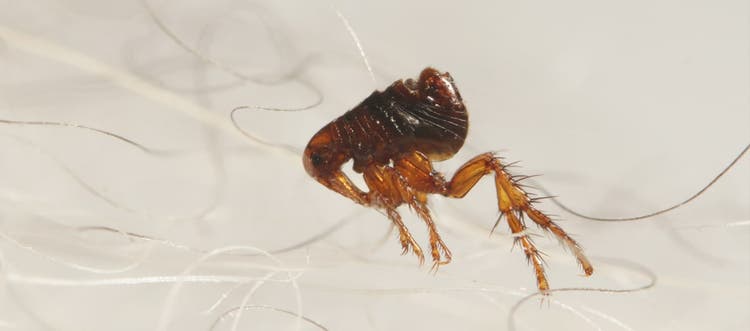How to identify flea bites on your dog or cat.
Flea bites can cause your pet discomfort, but how can you tell if that spot on your dog’s or cat’s skin is a flea bite or the product of another parasite or irritant? Keep reading to find out how you can properly identify a flea bite, which could uncover a flea problem early and help you resolve the issue quickly.
Signs of a Flea Bite
Single or Clustered Red Spot
If your dog or cat has been bitten by fleas, look for these signs when you brush back the fur on your pet’s belly, back or other areas:
- Single raised red or pink spots
- Clusters of two or three raised red or pink spots
- A faint red ring around the bite
Unfortunately, you may not always be able to find fleas or their bites on your pet. However, fleas leave other signs of their presence.
Biting, Licking or Chewing
Flea bites will irritate your pet because their presence often triggers your pet’s immune system response, causing severe itchiness. If your pet is vigorously and repeatedly scratching, this may indicate a flea infestation.
Scabs, a Rash or Hair Loss
Persistent scratching and biting can damage your pet’s coat and skin. Scabs, rashes, hives or hair loss from intense licking or scratching could indicate your cat or dog has a flea infestation.
What to Do If Your Pet Has Fleas
If you think your dog or cat has been bitten by fleas, but you don’t see any flea bites, take them to your vet. You’ll need a diagnosis and treatment plan before the infestation grows more serious.
However, if you have already identified fleas on your pet, there are a number of flea treatment products available for cats and dogs. If you have other pets, make sure to treat them according to the label instructions, too. To help stop the infestation, treat your home and yard, too.
It’s a good idea to keep your dog or cat on a year-round flea prevention program to help protect your pet from fleas and their itchy bites in the first place.
What If It Isn’t Fleas?
If you’ve ruled out the possibility of fleas on your dog or cat, either through giving a flea treatment or thoroughly searching your pet’s fur, they may be suffering from allergies or another insect’s bite:
- Irritated or itchy skin can be a telltale of seasonal allergies in dogs and cats. Other signs include sneezing, watery eyes and redness in the ears.
- Ticks can look like brown specks or swollen black spots on your pet’s head, around their ears or even in between their paws.
- Mites are too small to be seen with the naked eye, but if they burrow into your pet’s skin, they can cause a red rash, inflammation, skin lesions or hair loss. Learn more about ear mites in cats and sarcoptic mange (parasitic mites) in dogs.
- Mosquito bites are typically red, raised or swollen, and itchy.
- Bee stings can cause allergic reactions in some pets, just like in humans. If this is the case, the sting will induce swelling, hives, redness, or, in more serious cases, diarrhea, vomiting, stumbling or fainting.
If you think your pet is suffering from allergies or an insect bite, make an appointment with your vet; they can help determine the cause of your pet’s discomfort and recommend treatment to help your cat or dog get back to feeling their best.






